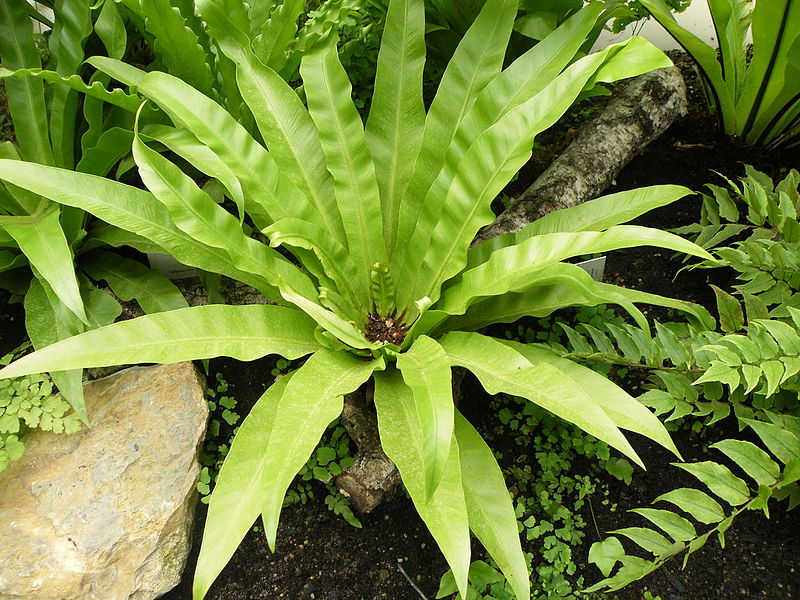
Native to tropical areas from Polynesia and Hawaii west to Southeast Asia, Australia, and Madagascar , this slow growing epiphytic fern is a member of the spleenwort family, Aspleniaceae. The plants grow from rhizomes and produce a vase-shaped rosette of broadly lanceolate fronds with a basket-like center that collects fallen leaves and other detritus. Each glossy, apple green frond is entire (rather than dissected), has wavy margins and brown to black midrib, and is 4-5′ long in the wild, but up to 2′ in containers. Sori are on the underside of the frond in a herringbone pattern. Few places in continental US provide suitable environments for growing the ferns outdoors but the plants make good houseplants and do very well in a terrarium. The genus name, Asplenium, comes from the Greek a- meaning without, and σπλήν, meaning spleen and refers to the use of the plants to treat spleen ailments. The specific epithet, nidus, is the Latin word best translated as nest, and refers to the basket-like structure formed by the fronds
Type: Tropical evergreen epiphytic fern
Bloom: None
Size:3-5′ H x 2-3′ W
Light: Part to full shade/bright light; avoid direct sunlight
Soil: Humusy, gritty, , consistently moist, well-drained
Hardiness: Zones 11-12
Care: Provide moderately high humidity
Pests and Diseases: Slugs, snails, scale, mealybugs, leaf nematodes, bacterial leaf diseases
Propagation: Spores
Companion Plants: Orchids, other epiphytic ferns, triangular fig
Outstanding Selections:
‘Crispy Wave” (wrinkled fronds)
‘Osaka’ (cold hard to 40 degrees)
Photo Credit: Marija Gajić Wikimedia Commons